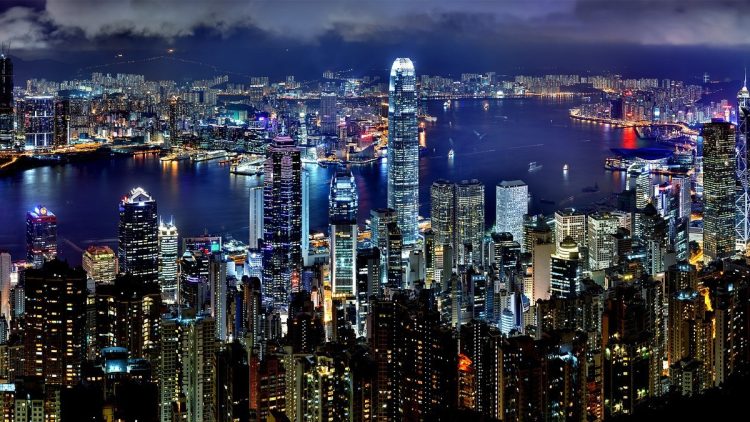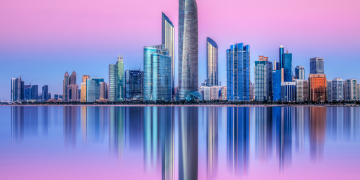Hong Kong is one of those rare places where skyscrapers meet incense smoke, where you can sip English afternoon tea after a morning at a Taoist temple, and where neon-lit night markets coexist with ancient traditions. A former British colony now under Chinese sovereignty, Hong Kong offers a dynamic and captivating fusion of East and West, old and new. This vibrant metropolis is a playground for the culturally curious, the culinary obsessed, and the fast-paced urban explorer. But can you really experience the best of both worlds in this compact city of contradictions? The answer lies in the electric energy of its streets.
Introduction: How Hong Kong Blends Eastern Tradition with Western Influences
To understand what makes Hong Kong so special, you need to walk its streets. Beneath towering glass skyscrapers, you’ll find incense-filled shrines nestled between 7-Elevens and Louis Vuitton boutiques. A tram ride through the financial district might drop you at a street market where locals haggle for dried seafood and Taoist talismans. That’s the beauty of Hong Kong—it’s not a city of seamless harmony, but of thrilling contrast.
British colonial rule lasted from 1842 to 1997, and its legacy is still tangible. English is widely spoken, British-style court systems persist, and double-decker buses trundle through the city. Yet the soul of Hong Kong is undeniably Chinese. Traditional Cantonese values, Confucian customs, feng shui-influenced architecture, and a calendar full of Chinese festivals pulse through everyday life. Westerners might find familiar comforts, but they’ll also be transported into a world of vibrant traditions that remain defiantly local.
This cultural mashup isn’t just visible in the architecture or language—it’s in the way people live. A banker in a bespoke suit might burn joss paper for ancestors before heading into a board meeting. A teenager might Instagram her bubble tea before heading to a Kwan Yin temple to pray for good exam results. In Hong Kong, duality is not a paradox—it’s a way of life.
Hong Kong’s Festivals: Chinese New Year and Other Important Cultural Events
Festivals in Hong Kong are not only celebrated—they’re felt, heard, and tasted. They fill the city with color, sound, and movement, transforming daily life into something otherworldly. Among them, Chinese New Year reigns supreme. For locals, this isn’t just a time for dumplings and red envelopes—it’s about setting intentions for the new year, paying respects to ancestors, and celebrating family.
Chinese New Year begins on the first day of the lunar calendar, typically falling in late January or February. In Hong Kong, the celebrations are particularly elaborate. There’s a world-famous fireworks display over Victoria Harbour, flower markets selling cherry blossoms and narcissus, and lion and dragon dances parading through the streets. Homes are cleaned top-to-bottom to sweep away bad luck, and dishes like turnip cake and glutinous rice balls are shared to bring prosperity.
Another must-see is the Mid-Autumn Festival, where locals eat mooncakes under glowing lanterns. Victoria Park transforms into a wonderland of handmade lanterns shaped like animals, cartoon characters, and traditional Chinese symbols. Lantern parades, fire dragon dances in Tai Hang, and poetry recitations add a mystical feel to the night.
Then there’s the Cheung Chau Bun Festival, one of the city’s most unique events. Held on the tiny island of Cheung Chau, this Taoist celebration honors the spirits with papier-mâché deities, lion dances, and the famous “bun scrambling competition,” where contestants race up a bamboo tower covered in lucky buns. It’s equal parts sacred ritual and quirky spectacle.
Even Western holidays like Christmas and Halloween are major affairs in Hong Kong. Shopping malls deck themselves in tinsel and lights, and theme parks like Ocean Park and Disneyland go all out. These holidays have been embraced with typical Hong Kong flair—exuberant, inclusive, and uniquely adapted to local tastes.
Street Food and Shopping: Explore the Best Places for a Food and Shopping Spree in Hong Kong
You can’t talk about Hong Kong’s streets without mentioning two things: food and shopping. Whether you’re craving a Michelin-starred meal or a $1.50 street snack, Hong Kong delivers. The city’s culinary scene is a deep dive into Cantonese cuisine, fused with influences from Southeast Asia, Japan, and the West.
Street food is a cultural experience, not just a cheap lunch. Wander through Mong Kok or Sham Shui Po and you’ll find skewered fish balls bobbing in spicy curry, egg waffles freshly pressed into honeycomb shapes, and cheung fun (rice noodle rolls) drenched in soy and sesame sauces. Try the local favorite pineapple bun with a slab of cold butter or sip on yuanyang, a quirky but addictive blend of coffee and milk tea.
If you want to sample Hong Kong’s culinary royalty, head to Tim Ho Wan, the world’s cheapest Michelin-starred restaurant, and feast on their legendary BBQ pork buns. Or venture to Mak’s Noodle for wonton noodles that are pure craftsmanship in a bowl.

And then, there’s shopping. Whether you’re into bargain hunting or luxury brands, Hong Kong offers a dizzying range. For a high-end spree, explore Harbour City, IFC Mall, or Pacific Place, where global designer names line immaculate storefronts. But for a taste of local commerce, head to the Ladies’ Market in Mong Kok, Temple Street Night Market, or Stanley Market, where vendors sell everything from silk robes to phone accessories. Bargaining is expected—and part of the fun.
If you’re into vintage and indie fashion, PMQ (Police Married Quarters) in Central houses emerging designers and concept stores in a historic Bauhaus building. For electronics, Ap Liu Street is a must. And if you’ve got a soft spot for the quirky, check out Sai Ying Pun’s hipster boutiques or Tai Ping Shan Street’s art galleries and coffee shops.
Top Travel Tips: How to Navigate This Fast-Paced Metropolis and Experience Its Unique Culture
Hong Kong can be overwhelming at first glance, but with a few smart tips, you can navigate like a local and fully immerse yourself in its cultural richness.
1. Get an Octopus Card
This contactless card is your ticket to everything—MTR (subway), trams, buses, ferries, and even convenience stores. It saves time, avoids language barriers, and makes public transport a breeze.
2. Explore the City by Foot and Ferry
While the MTR is efficient, don’t underestimate the charm of trams, known locally as “ding dings.” They’re slow, yes, but they give you a street-level view of the city’s buzz. For stunning skyline views, take the Star Ferry from Central to Tsim Sha Tsui—just HK$2.7 for one of the world’s best ferry rides.
3. Respect Local Customs
Hong Kongers are polite and reserved. Avoid loud public behavior and learn a few Cantonese phrases like “m̀h’gōi” (thank you) and “jóusàhn” (good morning). If you’re invited into someone’s home, bring a gift and take off your shoes.
4. Dress for the Occasion
Hong Kong is humid much of the year, but locals dress smartly. Even in the summer heat, you’ll see crisp shirts and chic dresses. Bring lightweight, breathable fabrics—but also something nice if you plan to dine at upscale restaurants or rooftop bars.
5. Be Temple-Savvy
Visiting temples like Man Mo Temple or Wong Tai Sin? Be respectful: no loud talking, no touching altars, and if you burn incense, place it upright in the pot. Ask locals about the meaning of temple rituals—many will gladly explain.
6. Time Your Trip Right
If festivals are your thing, plan for Chinese New Year (late Jan/Feb), Mid-Autumn Festival (September/October), or the Dragon Boat Festival (June). Avoid the rainy season from May to August if possible—though even then, the city pulses with life indoors.
7. Seek Hidden Gems
Don’t just stick to Central and Tsim Sha Tsui. Explore neighborhoods like Sheung Wan, where colonial and Chinese heritage collide; Tai O, a stilt house fishing village on Lantau Island; or Yuen Long, a haven for local snacks and heritage walks.
Conclusion
Hong Kong is more than just a city—it’s a sensation. It’s where ancient lion dances meet cutting-edge art galleries, where you can pray at a temple then party on a rooftop bar overlooking Victoria Harbour. For travelers seeking a place that balances vibrant tradition with sleek modernity, few destinations offer the layered richness of Hong Kong.
So can you really discover the best of both worlds in Hong Kong’s vibrant streets? Absolutely. But the secret lies in how you explore it—not just by checking off landmarks, but by eating where locals eat, joining a lantern parade, hopping on a tram, and saying hello in Cantonese. Hong Kong doesn’t just offer a travel experience—it offers a transformation. And all you have to do is step into the streets and let the city lead the way.





















